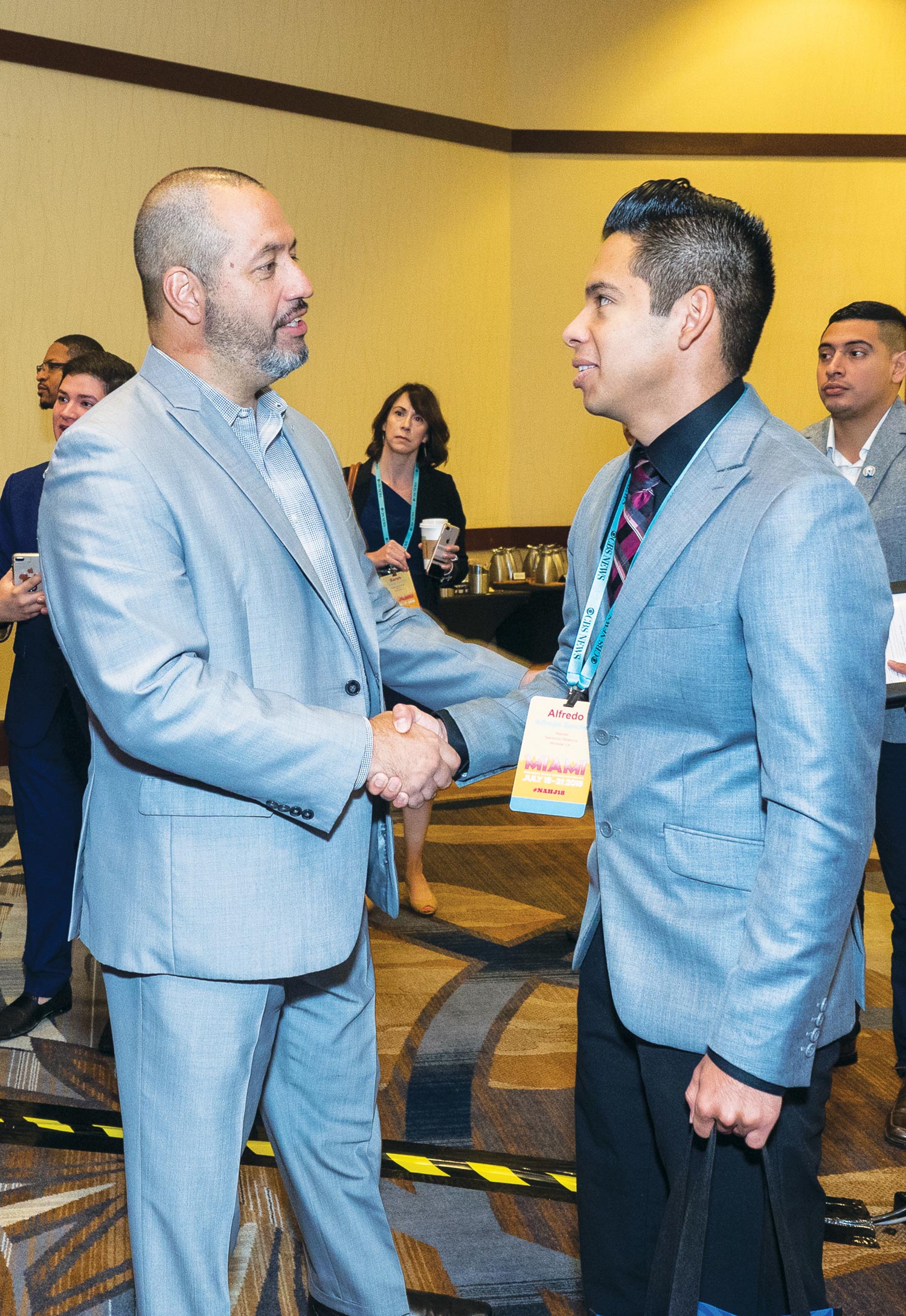n today’s media landscape, misinformation runs rampant, local news is declining, and polarization is on the rise. In addition, large corporations obsessed only with increasing profits are absorbing smaller outlets at an alarming rate. At times, the future of all news and information can seem bleak due to the damaging homogenization of operations, but new models are emerging. For example, collaborative networks that focus on solutions-based journalism are prioritizing communities and revolutionizing news media. That benefits reporting and the bottom line.
Collaboration is integral to the health of news and the health of democracy. I believe we must foster partnerships that reach across institutional, organizational, and societal boundaries to tackle complex problems with creative solutions.
As owner of the Latino News Network (LNN), former president of the National Association of Hispanic Journalists (NAHJ), and associate editor at the Chicago Reporter, I have seen firsthand how creative and collaborative journalism creates real impact.
At times, the future of all news and information can seem bleak due to the damaging homogenization of operations, but new models are emerging.
Singular success is in direct conflict with my cultural roots. I am a son of immigrants from Peru. My Latino culture centers around family and collective progress. Like many immigrants, we define achievement by what we do to raise one another up, not by individual attainment like crabs in a bucket. I’m among the first in my family to own a home or go to college, but these wins are not just about me. They’re about the family and friends that came before me and paved the way to success.
Collaboration is natural to me and many in the Latino community. At LNN, we have recalibrated how we define success. We believe that working together across many different lanes benefits the group. Beyond that, we know that nurturing a culture of collaboration is a direct reflection of the familismo values of the community we serve.

Hugo Balta regularly conducts local outreach and community connections to further ways for people to collaborate. Photo courtesy of Hugo Balta
I recognize that no matter how good someone is at listening, it can never compare to lived experience. Therefore, our newsrooms must be diverse, agile, and directly reflective of the people whose stories we are dedicated to telling. Crucially, we must stop thinking of our communities as our audience and start seeing them as our collaborators.
Collaboration is natural to me and many in the Latino community. At LNN, we have recalibrated how we define success. We believe that working together across many different lanes benefits the group. Beyond that, we know that nurturing a culture of collaboration is a direct reflection of the familismo values of the community we serve.
Choosing to listen and communicate with our community guaranteed our content was valuable. In addition, our model prevented us from wasting precious time and resources.
Most importantly, ours was a three-pronged collaboration in which our community was an equal partner. The project was for them and of them.

In March, LNN concluded the Advancing Democracy initiative sponsored by the Solutions Journalism Network. As part of the project, Connecticut Latino News (CTLN), another LNN satellite, produced a special series exploring solutions to the lack of Latino engagement at the voting polls. This highlights one major tenet of effective collaborations: trust.
CTLN can tackle the vital topic of the Latino electorate because our community trusts us. Trust is essential to communication. The public, especially marginalized communities, is increasingly distrustful of the media. Distrust discourages civic discourse and engagement.
Our bottom-up approach includes the public in all aspects of our process, from pitching stories to the focus of those stories, who gets to tell them, and how they’re packaged and delivered. News consumers influence what’s important every step of the way.
Our audience has taught us to demand more from our reporting and ourselves. We’ve learned to respond to the social problems that challenge our community. This doesn’t happen without a communicator or news director who is transparent and willing to listen and adapt.
I know that the trust we’ve fostered makes LNN a valuable partner to other news organizations and institutions. We serve our Latino community and help others do the same by building bridges and lending experience in storytelling that is culturally nuanced. In turn, our partnerships with established and storied outlets like WBEZ allow us to broaden our reach and tap new resources. I believe good collaborations are mutually beneficial.
The next frontier in collaborative media is distribution. Technology has brought us closer and at the same time distanced us from one another. Algorithms feed back to us what we put into them, creating echo chambers that limit us to the things that already hold our interest. This creates silos and fosters misinformation.
Moreover, there are massive barriers to entry for underserved populations in the world of technology. Not everyone has access to new technology. According to the Federal Communications Commission, approximately 19 million Americans still lack access to fixed broadband service.
I have experienced firsthand how collaborative partnerships can help us bridge these gaps. Of course, we should utilize technological tools in our reporting, but we cannot lose the value of in-person communication, especially in marginalized communities that appreciate a personal touch in relationship building. As members of the media, we need to leave our places of work. We must seek spaces where our audience discusses and debates the issues most important to them.
In leading the COVID-19 coverage as news director for WTTW, I decided to dedicate resources enabling news teams to go to neighborhoods across Chicago’s North and South Sides at the height of the pandemic. It was clear to me that while there was a shared experience, how Black and Brown communities were enduring the pandemic was bluntly different. Journalists can’t tell authentic stories on the sidelines, from a safe distance. They must get out on the playing field in order to see, listen, learn, and report back what’s happening in the neighborhoods where our diverse community lives.
[Journalists] must get out on the playing field in order to see, listen, learn, and report back what’s happening in the neighborhoods where our diverse community lives.
Increasingly, I come across exciting examples of outstanding journalism collaborations. Community-based reporting is on the rise, and stories are causing change. At LNN, our collaborative approach has allowed us to create real impact in a relatively short amount of time. For example, since ILLN launched in October 2021, we have joined the Solving for Chicago collaborative and the Chicago Independent Media Alliance (CIMA), received a second grant focused on solutions journalism, and were named one of the best Latina websites in the country by Feedspot.
CIMA is a partnership of 68 independent, local, and community-driven media entities coming together in the spirit of collaboration, especially in creating new revenue streams and heightening independent media’s visibility. The group’s goal is to create a self-sustaining media ecosystem in Chicago to better inform and serve the city and all of its diverse citizens.
I’m grateful for the early recognition, but what’s most important to me is the continued progressive growth of news and information platforms dedicated to best serving underserved communities by selectively participating in collaborations that help us fulfill our journalism responsibility and have a proven record of financial sustainability.
